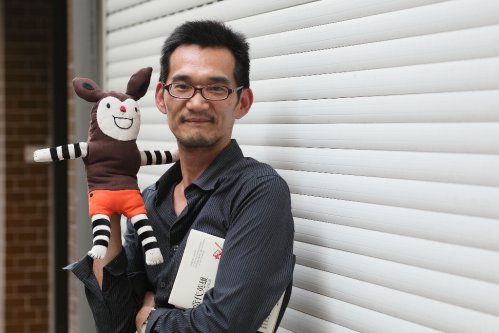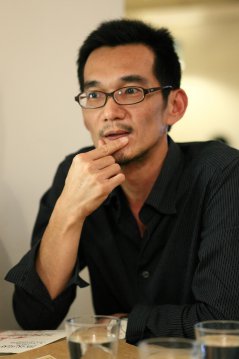"Mr. Podsnap was well to do, and stood very high in Mr. Podsnap's opinion."
--from "Our Mutual Friend" By
Charles DickensWhen John Harmon—who has been left a fortune if he will marry the girl his miserly father chose for him—is found floating dead in the Thames, he sets in motion a story overflowing with cases of deception and mistaken identity, of murder and attempted murder, of sin and redemption. The influence of the notorious Harmon inheritance ripples through a large cast of vividly drawn characters from every level of society, including Noddy Boffin, known as “the Golden Dustman”; the one-legged villain Silas Wegg; willful Bella Wilfer; saintly Lizzie Hexam; the sharp-witted doll’s dressmaker Jenny Wren; the social-climbing Veneerings; the ruthless speculator Fascination Fledgeby; and the river-scavenging corpse robbers Gaffer Hexam and Rogue Riderhood. Out of this flurry of invention Dickens creates in Our Mutual Friend a portrait of a city and a civilization that is at once indignant, compassionate, and utterly unforgettable. Charles Dickens’s last completed novel features one of his most surreal and haunting visions of London, shadowed by towering dust heaps that supply the corrupting riches at the heart of the plot and washed by the dark river that winds its way insistently through the story. This edition reprints the original Everyman’s preface by G. K. Chesterton and features forty illustrations by Marcus Stone.
「大戰『狄更斯』三百回合」之一:記倫敦
這文本取材 C. Dickens的
Our Mutual Friend。引者Italo Calvino 說它「值得在任何關於城市景觀的文集佔一席地位」。
我先發難:WAREHOUSE 是倉庫或批發店,「五金行」真是是(亂想之)「神來之筆」….(本文為上周數十封討論之摘要,我自己都有點入迷宮,所以Obasan的論點請參考留言 版……..)本段朋友討論甚多,將依下述順序整理:
SU朋友之譯文;整體了解;
說文解字;warehouse、withered、pins、sundial、waifs and strays、porter等等
A grey dusty withered evening in London city has not a hopeful
aspect. The closed warehouses and offices have an air of death
about them, and the national dread of colour has an air of
mourning. The towers and steeples of the many house-
encompassed churches, dark and dingy as the sky that seems
descending on them, are no relief to the general gloom; a sun-dial
on a church-wall has the look, in its useless black shade, of having
failed in its business enterprise and stopped payment for ever;
melancholy waifs and strays of housekeepers and porter sweep
melancholy waifs and strays of papers and pins into the kennels,
and other more melancholy waifs and strays explore them,
searching and stooping and poking for anything to sell.
【此段從網路
Our Mutual Friend抄下,經rl發現 housekeepers and porter應改成housekeepers and porters】
-----
「倫敦灰色、多塵、萎縮的月夜看起來沒有希望。關門的五金行和辦公室散發一種死亡的氣味,國民對於色彩的恐懼與散發一種哀悼的氣息。被眾多房舍圍繞的教 堂,其鐘樓和尖塔跟彷彿在襲擊它們的天空一樣又黑又髒,並不能舒解普遍瀰漫的陰鬱;教堂牆上的一面日晷,在它無用的黑色陰影中,看起來好像已經關門大吉, 而且永遠停止支付;憂鬱的管家和門房將憂鬱的紙屑與釘子掃進水溝裡,其他更為憂鬱的流浪漢就到那裡去翻尋,他們彎身翻尋所有可以賣的東西。」( Italo Calvino著《為什麼讀經典 李桂蜜譯,台北:時報出版, 2005, p.167)
---
張華翻譯:「倫敦市入夜人車凋零,灰濛濛的一片塵,看不出絲毫希望。大門深鎖的貨棧和寫字間 (氣氛) 彷彿鬼域。不喜華艷的國民本性,使得市容黑褐如辦喪事。房舍眾多的教堂,鐘樓和尖塔黝黯無光,和步步進逼的天空渾然一色,更加添瀰漫的陰鬱氣息。教堂牆上 的日晷,在黑色陰影中毫無作為,像是經營失敗的店鋪,永久歇業;零零落落的憂鬱傭人和雜工把零零落落的憂鬱紙片釘子掃進水溝裡,更為憂鬱的流浪孩童彎身在 水溝裡搜索翻撿,尋找可以賣錢的東西。 」
---
張瑞麟譯:「黃昏的倫敦,灰灰色衰,蕭條無望。
打烊的街道,沉沉死氣,宛如國喪。
群宇環繞處,教堂點點,
塔樓與塔尖,既黑且髒,
恰似襲落的夜空,解不盡許多憂傷;」
教堂牆上的日晷,身陷無用武之地,
猶若破產的企業,再也付不出款項;
三五成群的主婦與閽者,憂鬱傷感,
七零八落的紙張與碎物,掃入溝眼,
更有其他的流離兒把這些陰溝探遍,
時而翻找,時而彎腰,時而戳穿,
只為欲尋得任何可以變賣的物件。
---------
hc :似乎仍然無法表示出後來的重韻;
"
倫敦城黃昏, 灰黯、多塵、 凋零,沒有絲毫教人鼓舞處。間間庫房和辦公室都緊閉著,散發一股人去樓空的喪亡氣味;舉國對於豔色的懼避,讓城市有種哀悼氣息。教堂多座落在房舍圍繞處, 其鐘樓和尖塔又黑又髒,在凌駕其上的天空下顯得死氣沉沉,一如周遭普遍瀰漫的陰鬱;教堂牆上的一日晷,投影無力、渙散,年久失靈,好像事業倒閉退租般,永 遠不再報時了;許多管家和門房彷彿遊離失所般憂鬱(改成:憂鬱的管家或門房們寄集門外,將為人所棄的紙屑與釘子掃進水溝裡,氣氛一向多鬱悶;這些,再由更 可憐、積鬱的流浪漢們去翻尋,他們彎身找出所有可變賣的東西。"」(很早以前之作,只當歷史檔。)
-----
小讀者:
場景: 想像這是工業革命與赤裸裸商業主義正盛, 現代社會責任型資本主義未興的年代...這個倫敦, 就是小氣財神裡那熱鬧, 髒亂, 喧嘩, 污染, 人車馬,...的倫敦, 這裡的offices, warehouses, 也是小氣財神裡那種"寫字間"...貨棧...
從白日的熱鬧滾滾喧囂, 到黃昏時節猶如棄城死城, 所以曰 wither, 亦CH教授的冷清也
evening: 暮色四合的黃昏時節, 向晚時分, 還不到夜晚, 所以有後句夜色"降臨", 夜幕"低垂", 說descending是"襲擊"太沉重啦, descend是形容夜色降臨的常用字.
the national dread of colour: 最難譯就是文章的神氣筆調, 原文是典型的狄翁幽默反諷諧趣, 譯文很難傳達這種字裡行間不動聲色的揶揄. 這裡說的應是"吾國(吾民/吾人)對色彩的恐懼感, 吾國一向對色彩退避三舍的民族性" (當然是意譯)
are no relief to the general gloom, 也是這類諷刺反語, 既然dark, dingy, "當然"不能"舒解", 其實是使之"更甚, 火上加油"的意思. 所以平平譯成"並不能舒解", 這個"並"字的味道與方向不對. 若要說"並不能舒解", 照邏輯與語勢應該是雖有"好"東西, 並不能舒解.
一連三個waifs and strays, 前兩個是類比形容, 最後一個是具體身分, 怎麼譯, 難!
housekeeper應該是廣義的"清潔工", offices/warehouses僱用的打掃人員, 不是狹義的管"家"
整個場景, 可用清照十四字形容:
冷冷清清悽悽慘慘戚戚
不過照狄翁形容次序, 須倒過來
冷冷清清的街頭
悽悽慘慘的房影
戚戚的掃街
尋尋覓覓溝中
----
梁:「試改如下,不見得比較好︰
鬱黯的清潔婦、門房東一個西一個,
把東一點西一點鬱黯的紙頭釘屑掃進水溝;
鬱黯的流浪兒東一些西一些,探看水溝,
搜撈可以變賣的東西. 」
***----說文解字
---warehouse
張瑞麟rl:「我想既然是在倫敦,那最好照英國人的說法,我的字典上是這樣解釋的:2. Brit. a large retail store. 如果Random House Webster’s Unabridged
Dictionary的解釋可靠,如果我的英文程度還可靠,那麼,我把它解釋作「大零售店」,文章的時代背景,應該還沒有「大賣場」吧?」
張華;「Warehouse在19世紀的倫敦作何解,我覺得可能要進一部查考,例如pencil在當時有的作石筆解。Warehouse我覺得最安全的是直接譯為倉庫。當時的office可能也不像現時規模宏大。」
hc:「據Charles Dickens’ Great Expectations by Holly Hughes - Study Aids - 1984 - 122 pages
讀了第2頁,說明狄去一WAREHOUSE做貼鞋油罐標籤之工作。即, watehouse也有工廠之功能。」
**---withered
張華:「我覺得withered譯為痿縮有問題。城市如何萎縮?個人的理解withered是相對日間的熱鬧,可能要換個辭....」
「假如withered如我理解是相對於日間的熱鬧解的話,我會意譯為「冷清」而不依原文字面解釋。也即:
「倫敦灰色、多塵、冷清的夜晚」 或 「晚上的倫敦灰黯、多塵、冷清」」
hc:「查『
林語堂漢英辭典』:「凋零、凋落」或許比較好?
城市可否說飽經風霜、殘敗、枯萎、委靡般?
Meaning #1: lean and wrinkled by shrinkage as from age or illness
Meaning #2: (used especially of vegetation) having lost all moisture
Shriveled, shrunken, or faded from or as if from loss of moisture or sustenance: "the battle to keep his withered dreams intact" (Time).
King James Version with Apocrypha 用到它21 處。例:
caused it to rain upon one city, and caused it not to rain upon another city:
one piece was rained upon, and the piece whereupon it rained not withered. ...
「 收割前三個月,我就不給你們降雨,或者在這城下雨,在另一城卻不降雨;這塊地得了雨,而另一塊地沒有得雨,因而枯乾了;」( 亞毛斯 Amos 4 :7 )」
On this day in 1860,
Charles Dickens's GREAT EXPECTATIONS began serialization in the December 1 issue of "All the Year Round."
"So, throughout life, our worst weaknesses and meannesses are usually committed for the sake of the people whom we most despise."
--from "Great Expectations"
One of Charles Dickens’s most fascinating novels, Great Expectations follows the orphan Pip as he leaves behind a childhood of misery and poverty after an anonymous benefactor offers him a chance at the life of a gentleman. From the young Pip’s first terrifying encounter with the convict Magwitch in the gloom of a graveyard to the splendidly morbid set pieces in Miss Havisham’s mansion to the magnificently realized boat chase down the Thames, Great Expectations is filled with the transcendent excitement that Dickens could so abundantly provide. Written in 1860, at the height of his maturity, it also reveals the novelist’s bittersweet understanding of the extent to which our deepest moral dilemmas are born of our own obsessions and illusions. This edition includes Dickens’s original, discarded conclusion to the novel, the 1907 Everyman preface by G. K. Chesterton, and twenty illustrations by F. W. Pailthorpe.
-----
「in its useless black shade
又是狄翁曲筆:
日晷在白天有陽光有影子(shadow)時才有用, 向晚後沒有光就沒有影,
只有一片陰暗/黯色(shade非shadow, 有光才有影), 自然是無用了, 等到次日又會有用. 」
---
hc:「我看要再深入狄更斯的倫敦生活 還有太多細節未知。
牆上之dial 可參考
This Sundial Isn t Very Useful in London圖
www.stanford.edu/.../ london/london-Images/10.jpg
」
----waifs and strays
「小讀者」:「查了一下: waifs and strays-->dispersion, dispersed population
也來鬱鬱試一版:
只見三三兩兩這裡那裡有清潔工、門房鬱鬱清掃,
將三三兩兩這裡那裡鬱鬱的紙頭釘屑掃進水溝,
更有那三三兩兩這裡那裡更多、更鬱卒的流浪漢探看水溝,
搜索、彎腰、翻找任可以變賣的東西.」
張瑞麟「黃昏的倫敦,灰灰色衰,蕭條無望。
打烊的街道,沉沉死氣,宛如國喪。
群宇環繞處,教堂點點,
塔樓與塔尖,既黑且髒,
恰似襲落的夜空,解不盡許多憂傷;
教堂牆上的日晷,身陷無用武之地,
猶若破產的企業,再也付不出款項;
三五成群的主婦與閽者,憂鬱傷感,
七零八落的紙張與碎物,掃入溝眼,
更有其他的流離兒把這些陰溝探遍,
時而翻找,時而彎腰,時而戳穿,
只為欲尋得任何可以變賣的物件。
還沒把陰影中的日晷搞定,又思忖為何大家都不把 waifs and strays當孩子們看待?(請參考每日一字
http://home.kimo.com.tw/rwaylin_chang/wotd/wotd20050904.htm)
思忖為何housekeepers是複數形而porter卻用單複?
還想問:那個年代前者是否都是婦女,後者則都是男生?」
最後這五行實在是難看極了
我本來堅持第一組waifs and strays是housekeepers and porters的諸家小孩,流浪街頭;第二組waifs and strays是地上那些無主的零碎東西papers and pins沒問題;第三組waifs and strays還是街頭另一群被遺棄的小孩。
看大家都說三三兩兩,自己一時又喬來喬去,喬不出所以然來,只第三組維持自己的原意,為配合長度,選擇用「更有其他的流離兒」來代表and
other more melancholy waifs and strays,當然用流浪兒也可以,此時只是調皮拿旅日名作家開玩笑。其他兩組waifs and strays只好「同流合汙」取用「三三兩兩」說,又想有些變化,就各用了「三五成群」和「七零八落」。
還有,第二和第三個melancholy也插不進來,只好請狄翁見諒,害他「影射」的蕭條景象在我的譯文中無法循環。
----
hc:上節說教堂 此說市井人物 (六神)無主之眾生象。 這真是散文悲物詩 值得重譯
melancholy adj.
Affected with or marked by depression of the spirits; sad. See synonyms at sad.
Tending to promote sadness or gloom: a letter with some melancholy news.
Pensive; thoughtful.
waif
WordNet
Note: click on a word meaning below to see its connections and related words.
The noun waif has one meaning:
Meaning #1: a homeless child especially one forsaken or orphaned
--
Webster’s 1913 Dictionary
Definition: Waif, n. [OF. waif, gaif, as adj., lost, unclaimed, chose
gaive a waif, LL. wayfium, res vaivae; of Scand. origin. See
{Waive}.]
1. ( Eng. Law.) Goods found of which the owner is not known;
originally, such goods as a pursued thief threw away to
prevent being apprehended, which belonged to the king
unless the owner made pursuit of the felon, took him, and
brought him to justice. --Blackstone .
2. Hence, anything found, or without an owner; that which
comes along, as it were, by chance. ``Rolling in his mind
old waifs of rhyme.’’ --Tennyson.
3. A wanderer; a castaway; a stray; a homeless child.
A waif Desirous to return, and not received.
--Cowper.
waifs and strays 無主
『英漢大詞典』: 無家可歸者;(尤指)流浪兒;棄兒、無主財物或動物;零碎的東西
goo━━ n. 浮浪者[児]; (野良犬など)飼い主のいない動物; 持主不明の物品.
**--- pin
rl:「再問兩件事:
一、pins有粗大到足以稱「釘子」的程度嗎?既然和papers並列,是不是指大頭針、迴紋針、或釘書針等比較合理(不知道那時候有沒有這些產品?)
二、other more melancholy waifs and strays裡的more是不是修飾other,間接修飾waifs and
strays,而不是melancholy?要說「更憂鬱」是不是用much melancholy?」
hc:「pin 可能指 6. 瑣碎物 ,小東西(yahoo! 辭點)」
rl:「從Merrian-Webster Online Dictionary查得如下釋義:
2 a (2) : something of small value 詳見
http://www.webster.com/cgi-bin/dictionary?book=Dictionary&va=pin&x=0&y=0」
**---
張瑞麟 rl:「porter有好幾種不同性質的身分
1.a person hired to carry burdens or baggage, as at a railroad station
or a hotel.
2.a person who does cleaning and maintenance work in a building,
factory, store, etc.
3.an attendant in a railroad parlor car or sleeping car.
4.a person who has charge of a door or gate; doorkeeper.
我選閽者因為覺得
近水樓台先得月
doorkeeper素配 housekeeper」
這才叫 「門」當「戶」對
****
hc:「searching and stooping and poking for anything to sell.
這三動作是有"連續動作的意思吧 ?」
----
張瑞麟rl:「想像舊時眷村外有個集中式的垃圾區
影像中顯現幾個拾荒者
他們手裡拿著杖子
杖子在垃圾堆左右撥動-searching
有人好像看到好東西,蹲下去確認,要像老鷹般快速,不然會失之交臂-stooping
這東西還包了幾層,戳個洞瞧個究竟-poking
演了半天,還是沒弄懂「連續p意思」的意思」
---
hc的意思如此:「我猜前人翻譯此種文法,或許採取:搜索之、 近俯之、 細探之。」
 大清浙江省山陰縣
大清浙江省山陰縣 中華民國臺北市
中華民國臺北市 中華民國
中華民國 中華民國
中華民國 中華民國陸軍
中華民國陸軍








































 mu・ti・neer
mu・ti・neer







![[item image] [item image]](http://ia600504.us.archive.org/6/items/archaeologische00stargoog/archaeologische00stargoog.gif?cnt=0)





